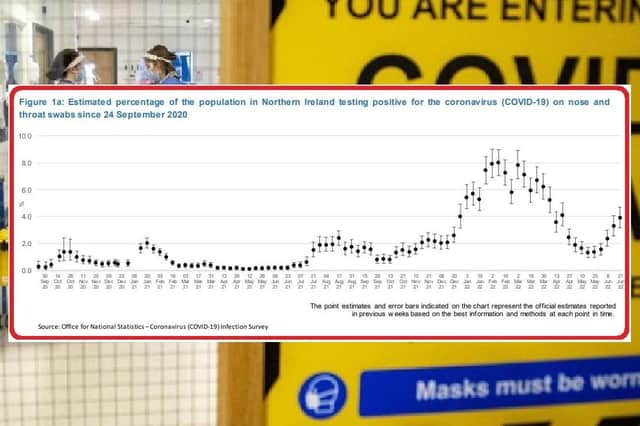Northern Irish health authorities believe that number of people with Covid could climb to about one in every 18


Professor Ian Young made the comments today as official figures show a distinct uptick in the numbers of people coming down with cases of the illness.
Whilst the Department of Health has largely ceased providing daily updates on a range of Covid information (as of about May 20), it still produces a weekly report which shows the number of people currently infected is estimated to be just shy of 4% of the population.
Advertisement
Hide AdAdvertisement
Hide AdProf Young expects it would not be a “surprise” if the number creeps up as high as Scotland’s current rate of about 5.5%.
Speaking to the BBC, he said: “Over the last few weeks we’ve seen an increase in the number of cases of the virus.
“That’s been due to the emergence of new forms of the virus – BA.4 and BA.5.
“They’re a bit more transmissible then the forms we’ve been used to.
Advertisement
Hide AdAdvertisement
Hide Ad“The immunity we had to infection is not quite as strong against them.
“These forms of the virus differ a little bit in their structure so that the immunity we had previously either from vaccinations or previously having the virus is not quite as good at protecting against BA.4, BA.5.
“Luckily, the chances of severe disease remain very low.”
As to what the future holds, he said: “I don’t think for a minute that BA.4 and BA.5 are the last forms of the virus we’ll see...
“Whenever any further form emerges, whether in the autumn, winter or next spring, we’ll have to see what sort of immunity to that we have.”
Advertisement
Hide AdAdvertisement
Hide AdThe Department of Health produced graphs tracking the infection rate over time, beginning in September 2020.
It shows that by far the biggest spike was in mid-February this year, when it was estimated that slightly over 8% of the population had it.
It then plunged down to well below 2% in mid-May, but has been creeping back up ever since.
The professor also said it is “very likely, as with flu vaccines, that we will offer boosters to people working in health and social care or in close contact with those who are vulnerable”.
Advertisement
Hide AdAdvertisement
Hide AdHe added: “I think we are always concerned about the pressures our hospitals are under.
“At the moment the number of patients in hospital with Covid is probably around two thirds of what it was during the peak, which is quite significant for the summer period.”